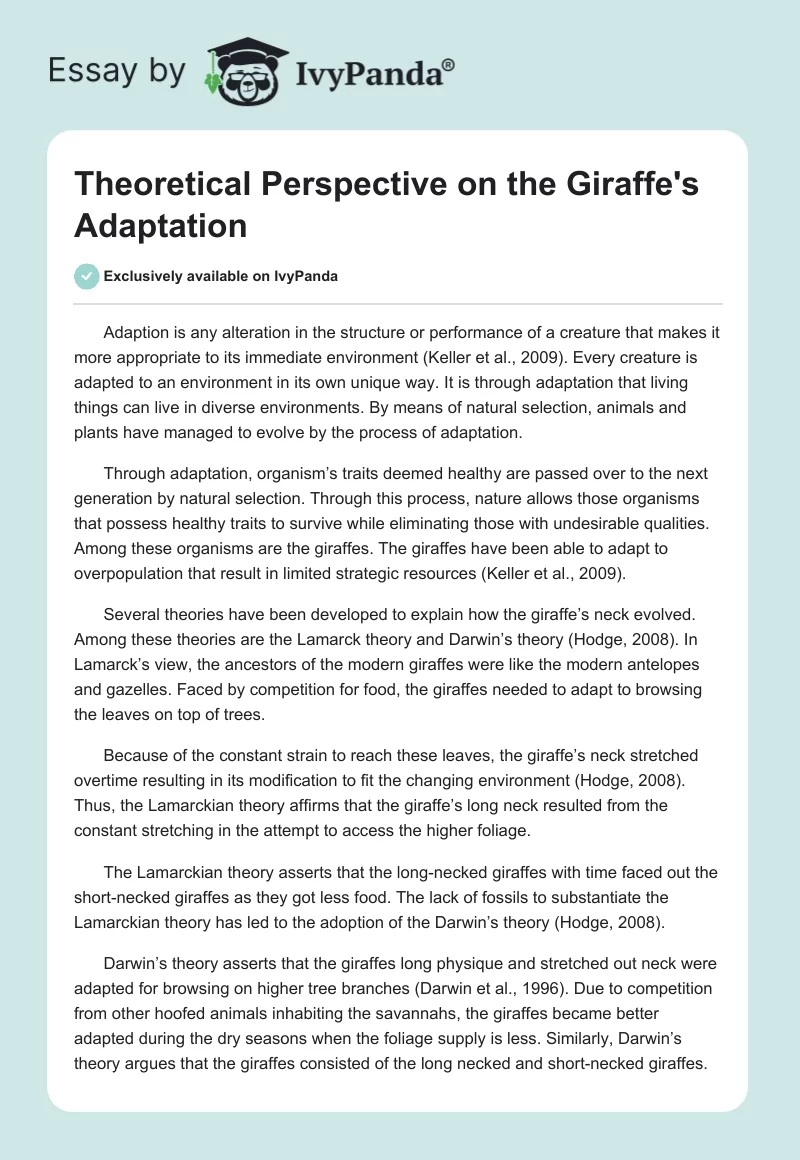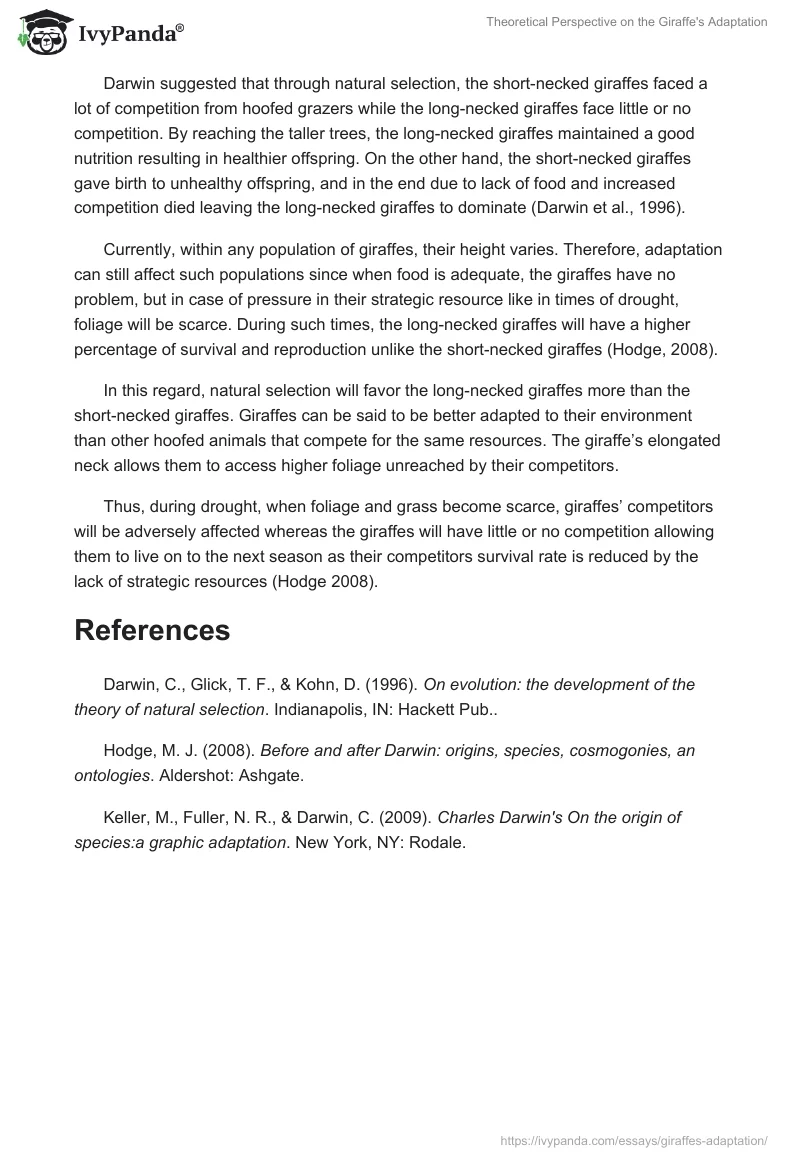Adaption is any alteration in the structure or performance of a creature that makes it more appropriate to its immediate environment (Keller et al., 2009). Every creature is adapted to an environment in its own unique way. It is through adaptation that living things can live in diverse environments. By means of natural selection, animals and plants have managed to evolve by the process of adaptation.
Through adaptation, organism’s traits deemed healthy are passed over to the next generation by natural selection. Through this process, nature allows those organisms that possess healthy traits to survive while eliminating those with undesirable qualities. Among these organisms are the giraffes. The giraffes have been able to adapt to overpopulation that result in limited strategic resources (Keller et al., 2009).
Several theories have been developed to explain how the giraffe’s neck evolved. Among these theories are the Lamarck theory and Darwin’s theory (Hodge, 2008). In Lamarck’s view, the ancestors of the modern giraffes were like the modern antelopes and gazelles. Faced by competition for food, the giraffes needed to adapt to browsing the leaves on top of trees.
Because of the constant strain to reach these leaves, the giraffe’s neck stretched overtime resulting in its modification to fit the changing environment (Hodge, 2008). Thus, the Lamarckian theory affirms that the giraffe’s long neck resulted from the constant stretching in the attempt to access the higher foliage.
The Lamarckian theory asserts that the long-necked giraffes with time faced out the short-necked giraffes as they got less food. The lack of fossils to substantiate the Lamarckian theory has led to the adoption of the Darwin’s theory (Hodge, 2008).
Darwin’s theory asserts that the giraffes long physique and stretched out neck were adapted for browsing on higher tree branches (Darwin et al., 1996). Due to competition from other hoofed animals inhabiting the savannahs, the giraffes became better adapted during the dry seasons when the foliage supply is less. Similarly, Darwin’s theory argues that the giraffes consisted of the long necked and short-necked giraffes.
Darwin suggested that through natural selection, the short-necked giraffes faced a lot of competition from hoofed grazers while the long-necked giraffes face little or no competition. By reaching the taller trees, the long-necked giraffes maintained a good nutrition resulting in healthier offspring. On the other hand, the short-necked giraffes gave birth to unhealthy offspring, and in the end due to lack of food and increased competition died leaving the long-necked giraffes to dominate (Darwin et al., 1996).
Currently, within any population of giraffes, their height varies. Therefore, adaptation can still affect such populations since when food is adequate, the giraffes have no problem, but in case of pressure in their strategic resource like in times of drought, foliage will be scarce. During such times, the long-necked giraffes will have a higher percentage of survival and reproduction unlike the short-necked giraffes (Hodge, 2008).
In this regard, natural selection will favor the long-necked giraffes more than the short-necked giraffes. Giraffes can be said to be better adapted to their environment than other hoofed animals that compete for the same resources. The giraffe’s elongated neck allows them to access higher foliage unreached by their competitors.
Thus, during drought, when foliage and grass become scarce, giraffes’ competitors will be adversely affected whereas the giraffes will have little or no competition allowing them to live on to the next season as their competitors survival rate is reduced by the lack of strategic resources (Hodge 2008).
References
Darwin, C., Glick, T. F., & Kohn, D. (1996). On evolution: the development of the theory of natural selection. Indianapolis, IN: Hackett Pub..
Hodge, M. J. (2008). Before and after Darwin: origins, species, cosmogonies, an ontologies. Aldershot: Ashgate.
Keller, M., Fuller, N. R., & Darwin, C. (2009). Charles Darwin’s On the origin of species:a graphic adaptation. New York, NY: Rodale.


